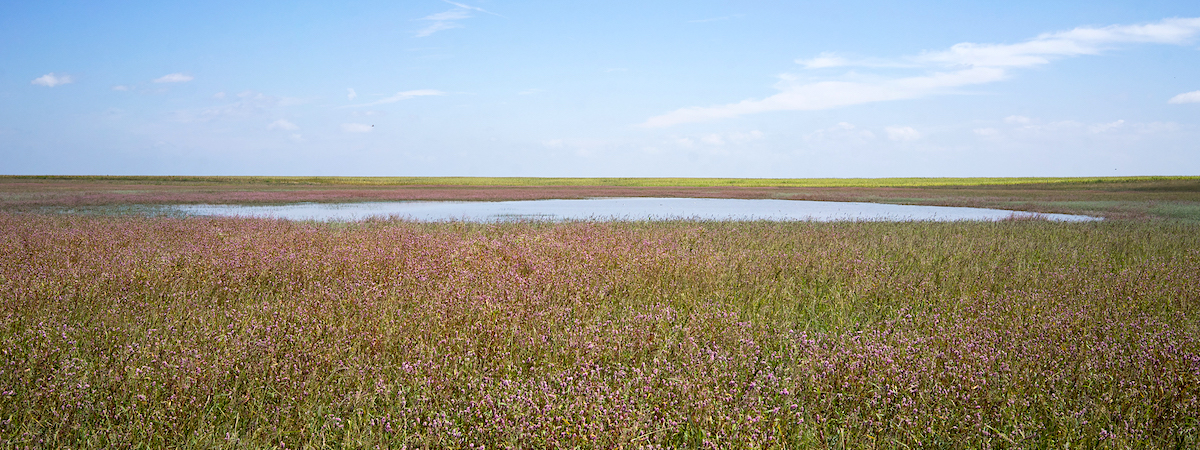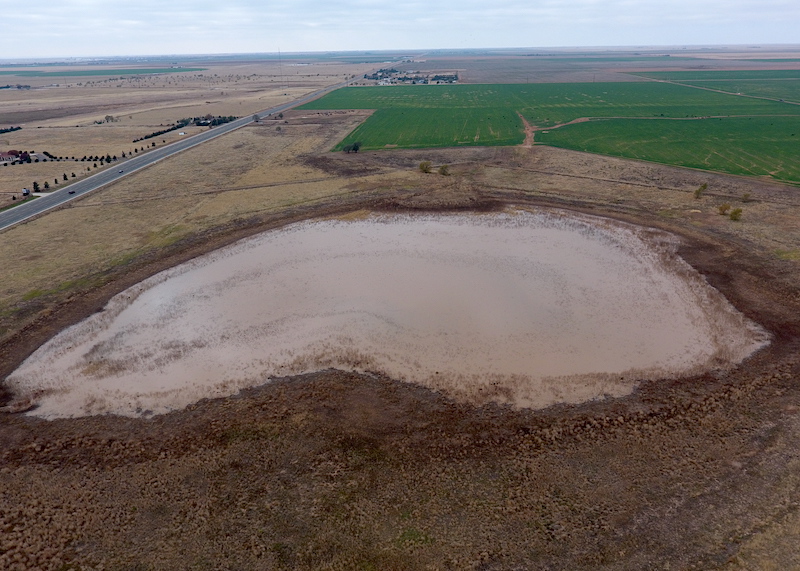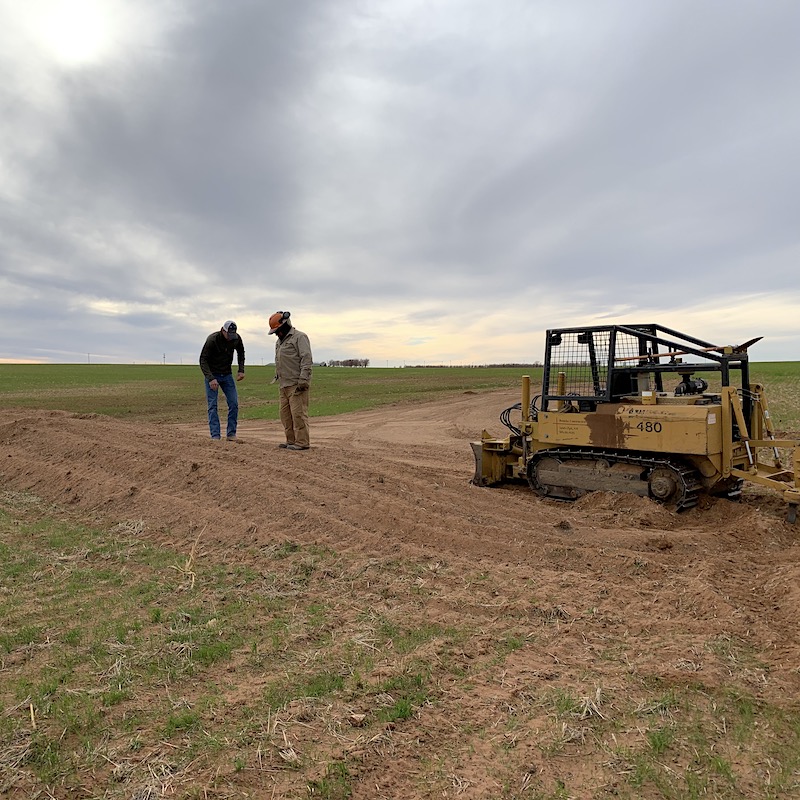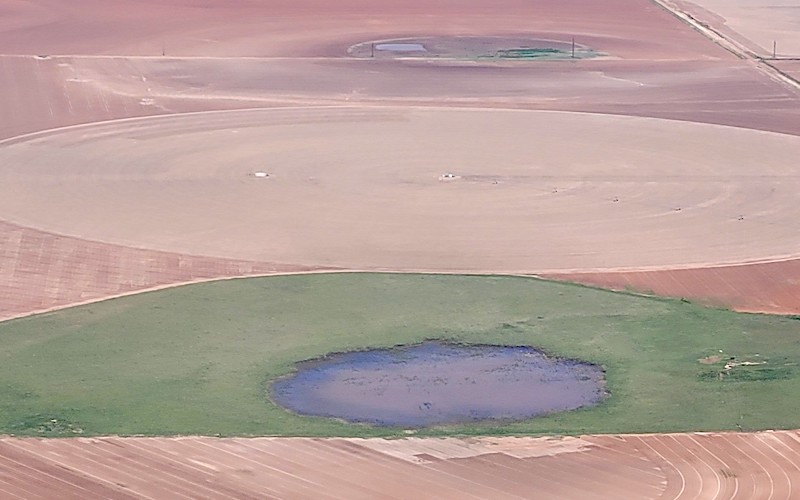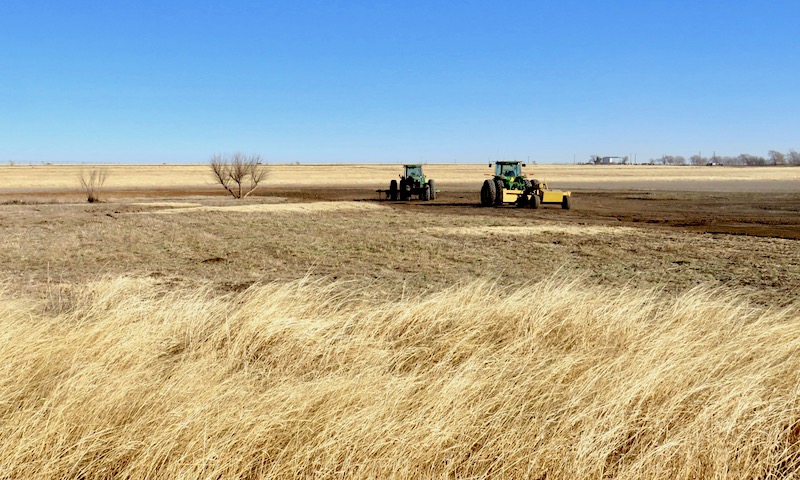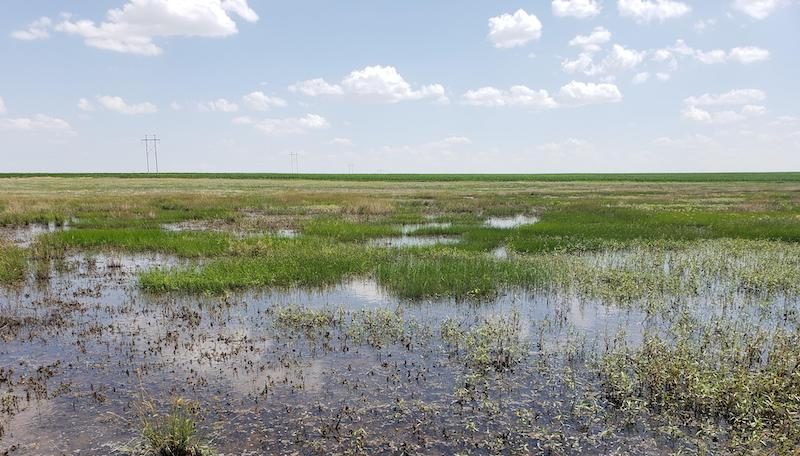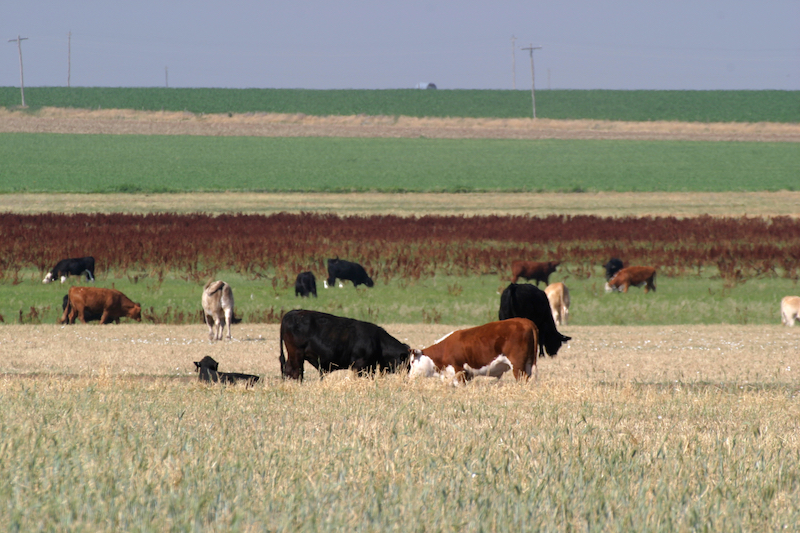Many playas have been modified and are no longer functioning as healthy playas. When that happens, what can we do to restore playas and put them back to work?
Playa restoration reverses past modifications to playas by removing accumulated sediment, filling drainage features, redirecting water back into the playa, and protecting the playa with a buffer composed of native vegetation.
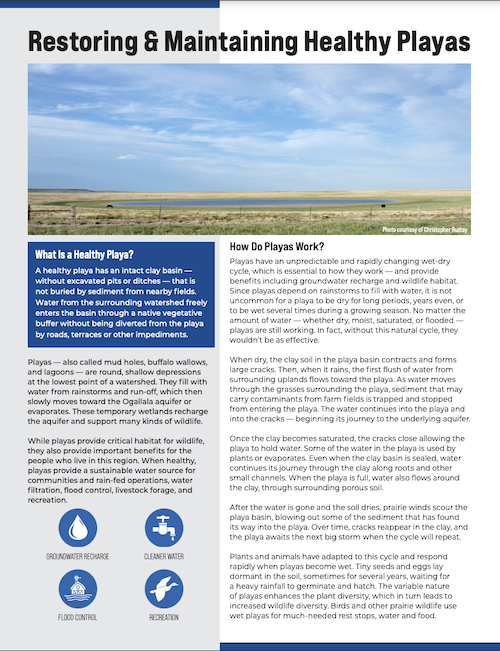
Playa Restoration Guide
The information on this page is included in our Playa Restoration Guide, which is available as a PDF. In the guide, you’ll learn:
- how to restore and maintain healthy playas,
- what to expect as you work with conservation delivery staff to plan and implement a playa restoration project, and
- how to get financial and technical assistance for your playa restoration project.
Download the Playa Restoration Guide (also available in Spanish) >>
Establish a Native Prairie Vegetation Buffer
Playa buffers — areas of permanent vegetation surrounding a playa — protect the playa by preventing sediment, which may carry contaminants from surrounding farm fields, from reaching the basin and should be a part of every restoration project when the playa is in cropland. Buffers provide habitat for many species of wildlife, while improving the quality of the water entering the playa basin and, in turn, the water that reaches the aquifer.
The buffer width is dependent on many factors, some biological and others more practical in nature. Studies have shown that buffer widths of at least 130 feet can effectively trap the majority of sediment and contaminants from reaching the playa; however, that is dependent on the plant species chosen. Since the majority of playas are found within crop fields, considerations for buffer size and shape are often determined by the most efficient method of farming the rest of the field.
The seed mix should be determined based on management goals. Diverse mixes with native grasses, forbs, and legumes increase biodiversity for wildlife and provide diverse forage for livestock. Restoring historic plant communities offers the best chance of success. Predominant native grass species that are suitable for playa buffers and adapted to the high plains include blue grama, buffalograss, sideoats grama, and little bluestem, while numerous species of forbs and legumes native to the region can be included in the seeding mix.
Sedimentation is usually caused by issues within the surrounding watershed. To keep sediment out of a playa, determine where and how sediment is deposited in the basin and what can be done to prevent sediment accumulation in the future.
Remove Accumulated Sediment
Once the sources causing sedimentation have been identified and addressed with buffers and other conservation activities, planning for sediment removal can begin. Other than excavation, wind is the only other way sediment is removed from a playa; but wind alone cannot remove all the excess sediment that is often found in modified playas and those without a grass buffer. Sediment accumulation in playas is usually not evenly distributed across the playa basin, with sediment depth related to where it came from and how it was deposited.
Even sediment depth of a few inches can have severe consequences for playas and the many benefits they provide. Accumulated sediment from adjacent uplands affects the volume of a playa, decreasing the amount of water it can hold, and may also alter plant communities within the playa. Playas in cropland, where sediment loads are higher, often have an increased number of exotics and annuals. Sediment can also bury seed banks of native wetland vegetation which typically occur in playas, as well as bury invertebrate egg banks, too.
When addressing sediment issues, the soil type within the watershed should also be considered, especially in surrounding fields that do not have adequate vegetative cover throughout the year. Since medium textured soils are more easily eroded than fine soils, playas in areas with medium textured soils often have nearly twice the excess sediment of those in areas with fine soils. Also, sediment carried by water flowing in through a channel may travel farther into the playa than sediment transported by normal overland flow. Sediment removed from the playa should be spread out in areas that won’t create new sources of sedimentation. Spoil areas within the buffer area will need to be vegetated.
Fill Drainage Features
Pits and ditches concentrate water into a small area and keep the playa from going through its normal wet and dry cycle. While a pit may trap and hold water for a longer period of time, it comes at the cost of keeping the rest of the playa functional since it cannot go through the critical wet-dry cycle, which reduces habitat for wildlife and affects groundwater recharge.
Filling pits allows rainwater and runoff to reach all the large cracks in a dry playa — which is essential for recharge to occur — rather than collecting in the pit. A pit may also break through or remove part of the clay soil, which will circumvent the cleaning function of the playa. In most cases, the spoil pile from the original excavation is present and should be used to refill the pit. Although the pit may not be completely filled or level when using the soil from the spoil pile, it will smooth out once the playa has been filled with water several times.
Channels are often cut into playas to facilitate draining the water within the playa. Removing these channels can be a matter of simply filling them in with appropriate materials and stabilizing the site of disturbance with vegetative cover.
Restore Water Flow
Redirecting water diverted from the playa is a critical but often overlooked part of playa restoration. Terraces, diversions, roads, clogged culverts, and other modifications to the area surrounding a playa have likely changed the water flow and may be preventing water from reaching the playa basin and reducing playa function. To fully restore playa function and recharge potential, include the surrounding area in your planning process. Sometimes, these modifications or diversions are located on a neighbor’s property and may require a collaborative effort to address.
Keep Playas Working
A restored, healthy playa — with excess sediment removed, water redirected into the playa and protected by a vegetative buffer — will function effectively; however, there are management activities which can be used to help maintain and improve the playa.
Grazing Management
Grazing has always been an important component of the prairie landscape, and it can be used to manage the vegetation in playa buffers and basins. This can provide additional forage for livestock, especially during drought when the only moisture supporting plant life is often found within a playa, as well as better wildlife habitat. Prescribed grazing, along with prescribed fire as appropriate, will help maintain both the playa and surrounding uplands in the best condition for both cattle and wildlife.
While playas can be part of a grazing system, utilization rates should be carefully planned and monitored so the vegetation height within the buffer can continue to effectively trap sediment from reaching the playa basin. Playas within cropland can also be grazed as part of an effort to utilize crop residues for forage during the grass-dormant season.
Future Modifications
Because water is the primary driver influencing most natural functions in playas, any future modifications within the catchment area — such as road maintenance, terrace rebuilds, and ditch clean outs — may impact playa health and need to be carefully planned with that in mind.
Recreational Management and Stewardship
Wet playas attract thousands of waterfowl and shorebirds which provides opportunities for local hunting and birdwatching. They are also a living laboratory where people can learn about wetlands, geology, and the history of the region. Maintaining playas for recreation can provide financial incentives as well as a long-term legacy for future generations.
There are state and federal programs that can help landowners incorporate these goals into their playa management plan. Some programs offer financial incentives for public access on private lands and others offer long-term or permanent easements, ensuring the landowner’s conservation values are carried forward.

